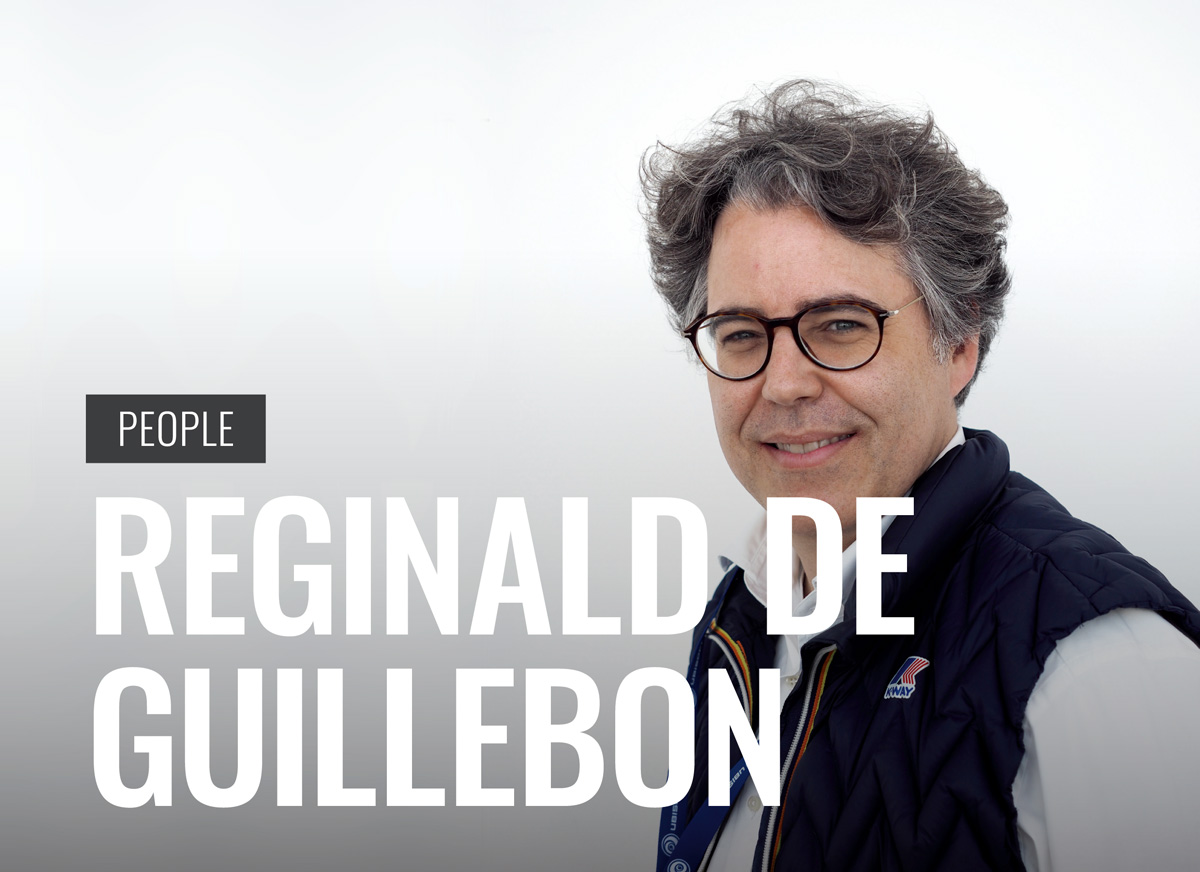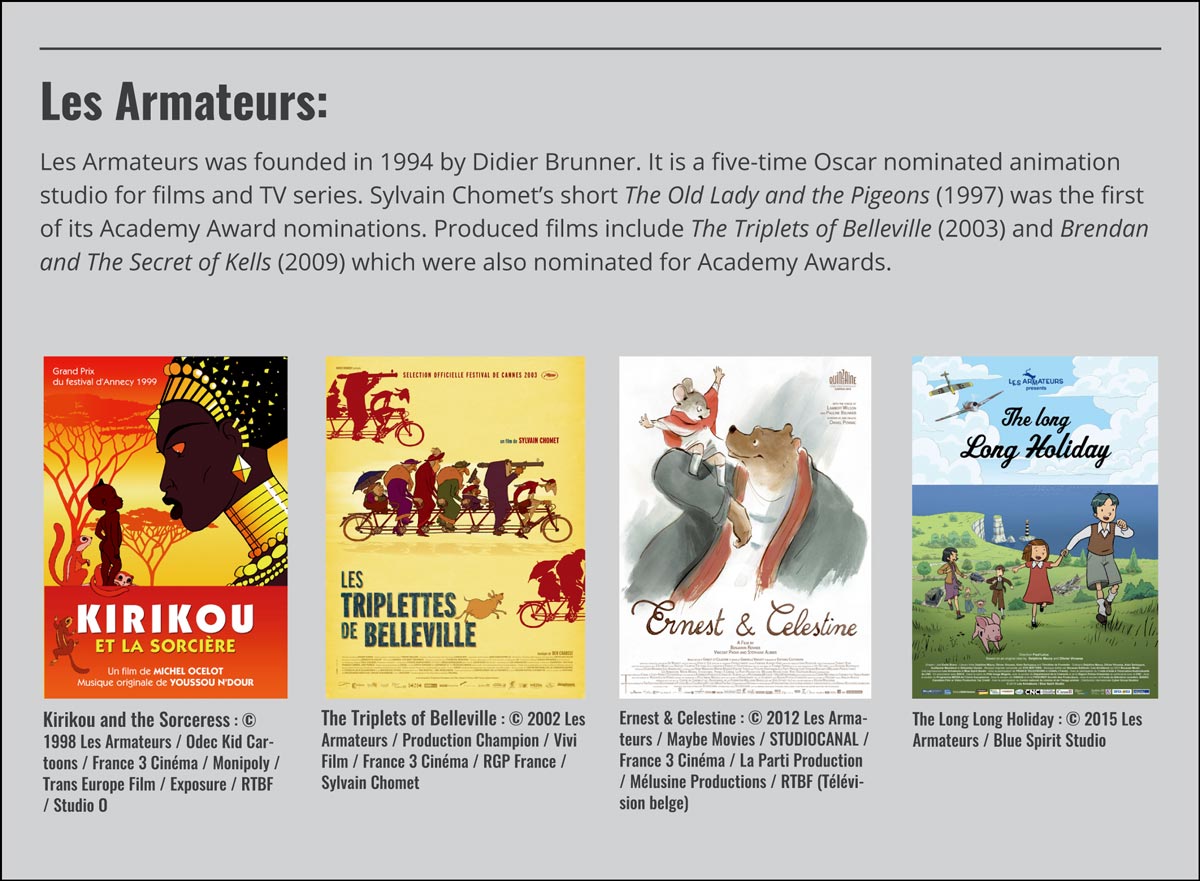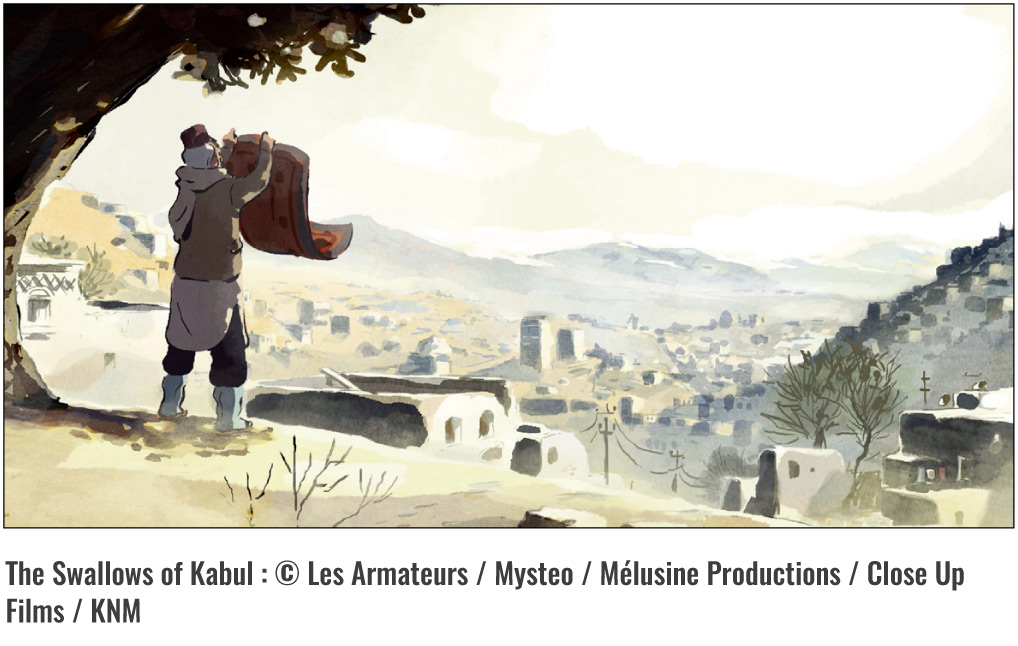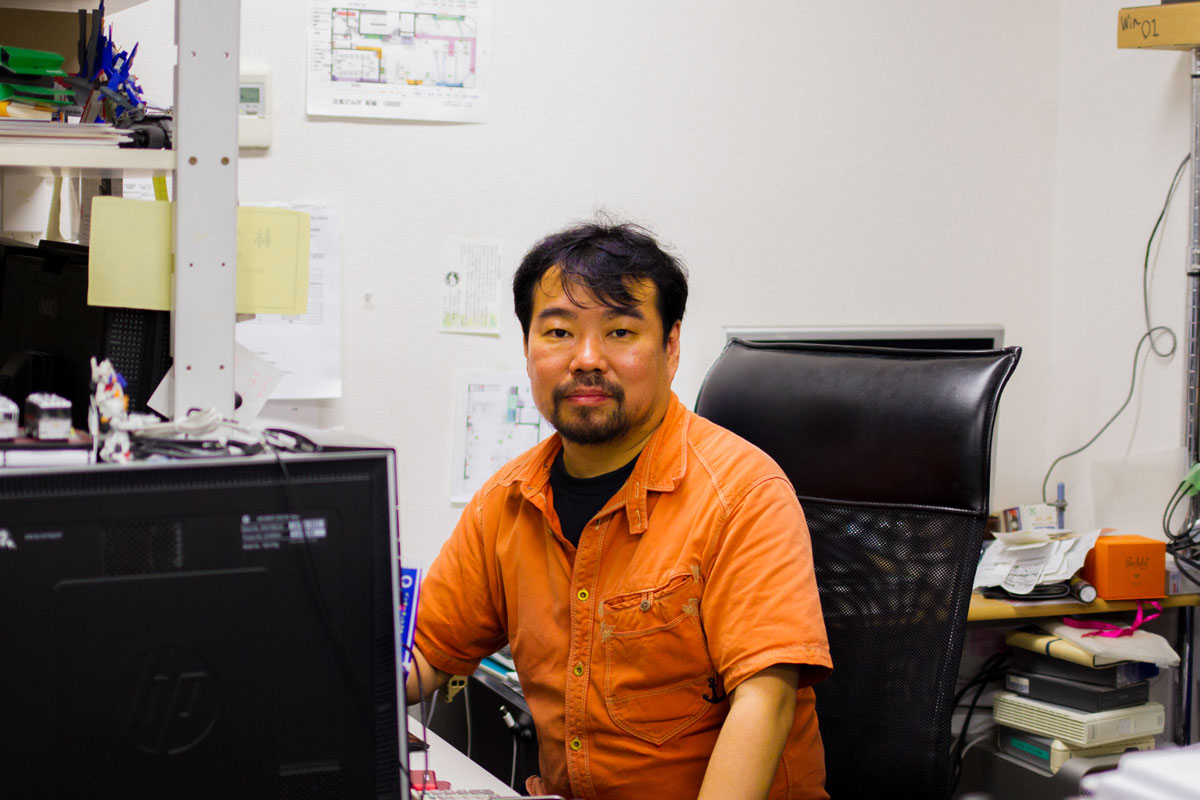
Reginald de Guillebon is the president of Les Armateurs, a prestigious animation studio based in Paris, France. We sat down with De Guillebon to hear about his involvement in animation, his insights towards the animation market and industry, and his vision for future projects.
Joining the Animation Industry
Why did you decide to come into the animation industry?
First of all, I always liked entertainment such as movies and television when I was a child. While I was working for the investment bank, I luckily had a chance to work with one of the biggest media group companies who was doing a lot of animation. In one part of the group, there was Les Armateurs. This is how I got to know animation. In between all that, I decided to make a change in my career and stopped working for finance. I went to Ecole de l’image Les Gobelins to study animation. And I have a partner, Bernard Deyriès, who is well known for being a director of the animation series Inspector Gadget.
Deciding the Project to Produce and the Team
How do you find and decide the film projects which you want to produce? What is the most important thing for you to consider?
The most important thing is a good story. We also look at the design after the story, but the design can always be worked out afterwards. The story is the real message that has to be appealing. Then, we have to take what the market and distributors want into account, as financing movies is difficult. The distributors are the first clients in a way, who are going to buy the movie and make it possible to produce movies. If you produce something that they don’t want, like your own personal project, then you won’t be able to produce the movies. But, this does not mean that you should not try new innovative projects, and you have to try. The role of the producer is to convince people that it is a good project.
The producer needs to keep a balance.
Yes, you have to keep the balance of something being innovative as a producer. It also has to be a collective decision, because a lot of people are going to work on it. If I’m the only one person who likes the project, even though I am the owner of the studio, none of the people would work on it, and the project would go nowhere.
How do you decide which director or the production team will produce the films?
It is basically that we try to find the best director possible who has the sensibility for the project and is most enthusiastic about it, because the director needs a lot of enthusiasm to carry the movie. There are a lot of ups and downs during the production process, and you can sometimes get depressed. We try to find the most enthusiastic person possible. It’s really what matters most.
2D Animations and Its Market
You’re not only producing 2D animation, but what part of 2D animation is attractive to 2you?
What makes 2D attractive is the poetry about it. I mean it’s the quality of the design and artistic feeling about it in all the possibilities. It seems that you can really go crazy with 2D animation, and you can do what you want to do artistically. With 3D, it could look good on paper during pre-production, but if you want to make it good in 3D in the same sense as 2D, you need to have a budget of Pixar or Disney, like 150 million dollars, which we can’t do in Europe. It makes sense for us to do very good 2D animation.
What do you think about the potential of 2D animation? 2D animation is still quite huge in Asia.
In the context of France, 2D is very difficult because 2D animated films have not been very successful at the box office for a long time, at least last five years. Also the competition with American 3D animated films are getting much more intense. It used to be like we would have one or two animated films from France, and two or three 3D animated films from the United States. However, today, for example, you could have two Disney films, two Pixar films, two DreamWorks films, and two Blue Sky films. They could just take over the market with high quality programs with big brands and marketing. You know that kids are kids. They go to see what they see on the streets and say, “Oh, I want to go to see that!” And you want to please the child, so you bring them to see that. Unfortunately, that is the way it goes.
What we have to do is to be smarter, find more appealing stories, maybe for more little kids than bigger ones. Kids who are 8 years old already want to see Star Wars and Spider-Man. That’s the fact. I see the market competition targeting older than 5 or 6 year-olds becoming tougher.

Animations for Adult Market
For example, you are working on The Swallows of Kabul, the animation aiming for adults.
Yes, it is an adult animation, which is even more difficult than children’s animation. It’s very hard to finance, but we are finishing the financing right now. I think that it carries a great message in this difficult time. It’s difficult right now to be a woman in certain countries. So I think it’s really important to get the movie done. And we have a great distributor and a great sales agent. It’s going to take time, but I’m happy to do this.
What do you think about animation targeting adults?
We believe there is a market. It’s always the same thing. Nobody wants to be the first one to go. For example, comics and video games are for the kids in the 80s. But kids from the 80s are now my age, and we continue to play video games and buy comic books. So that population was also watching cartoons, and they like cartoons. They want different cartoons, like The Simpsons. It always seems to be great people who come up with a great story, and everybody is going to see it, then everybody is going to think “Oh, there is a market”. It’s difficult to be the first one, but we will see.
Co-production and Its Difficulty
What do you think about international collaboration and co-production?
Let’s be clear about international collaboration. It is a necessity. If people could do it in house all alone, everybody would prefer that. Everybody does co-production because they have the financial reason. That’s the clear truth. Co-production makes it more complex. You have to explain two times or more to make people decide. It’s complicated, but you have to do it financially.
We don’t have the market in Europe. I mean there are three countries that have the markets to do it alone. They are Japan, China and the United States. That’s it. Three countries who are apparently able to do from A to Z within one country, without having co-production at all.
We are situated somewhat in between. We can work within one country or a few other countries within the European borders. We are used to co-production. This happens all the time.
Are you interested in co-production with Asian countries?
Actually, we tried. We wanted to co-produce with Japan, but it did not go further. It was a great project, but we could not agree with the script. It was a French author and he did not want to let it go to professional writers and wanted to write it by himself.
What kind of difficulty do you foresee when you consider co-production? Is cultural difference going to be the most difficult part?
Yes. It was funny because I was with a producer in Denmark, and all the Nordic people collaborate together because they are used to do so. And when they co-produce with a bigger country, they work with Germany because of the cultural resemblance.
Culturally, we go to Belgium, Luxembourg, or Canada because of the language.
For example, if we work with Japan, cultural shocks could be big from both sides, even if they have respect to the tradition of each other’s animation. I think it could be a difficult thing to do. People have their own certain way of doing things. In an animation project, if it goes wrong, it can go wrong very quickly and financially.
Future Projects
What are the kinds of animation would you like to produce in the future?
I’m interested in producing both 2D and 3D animation with stories that carry a message that is funny and well told. Of course, it has to be a little bit commercial. If you don’t meet public demand, you are not going to be able to produce another film, so it has to be commercial. But it does not mean that it is badly done. In France, people sometimes say if the movie is not commercial and nobody has seen it, “Oh, it’s art!“. But art can meet the public. What I hope to do is produce films which will be well respected by my colleagues and by the industry as a great animation, but also have great public potential. That’s what I would like to aim for.







